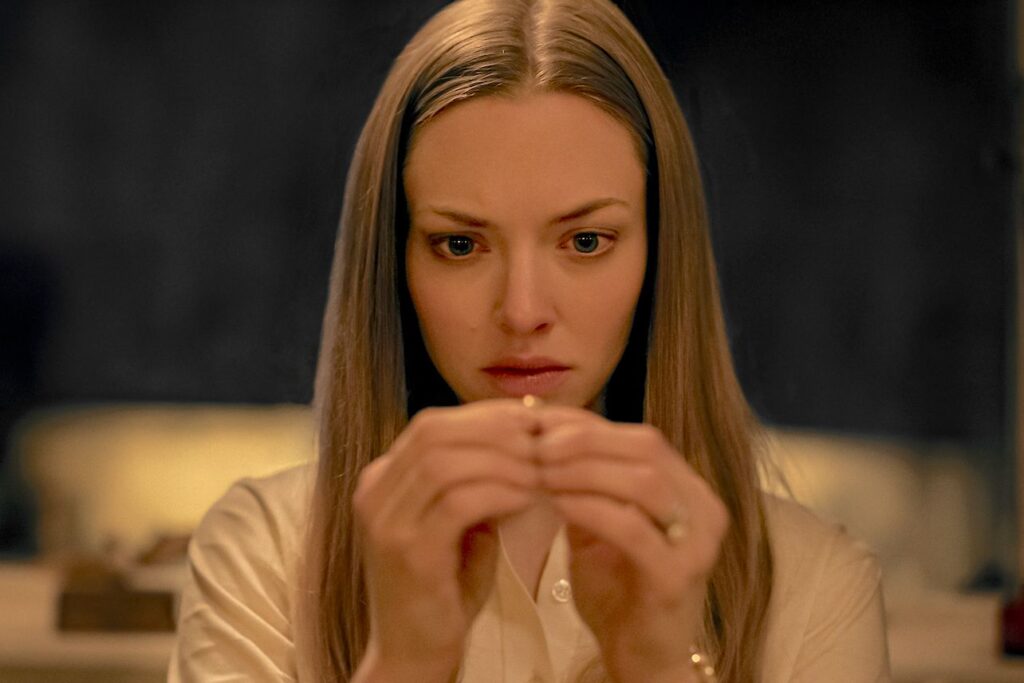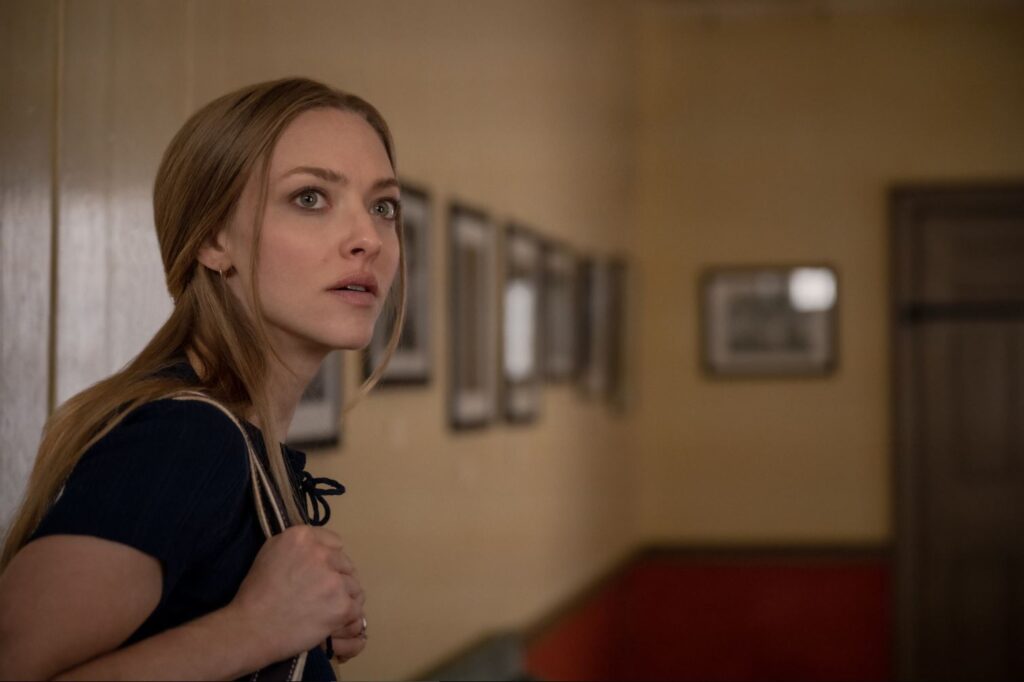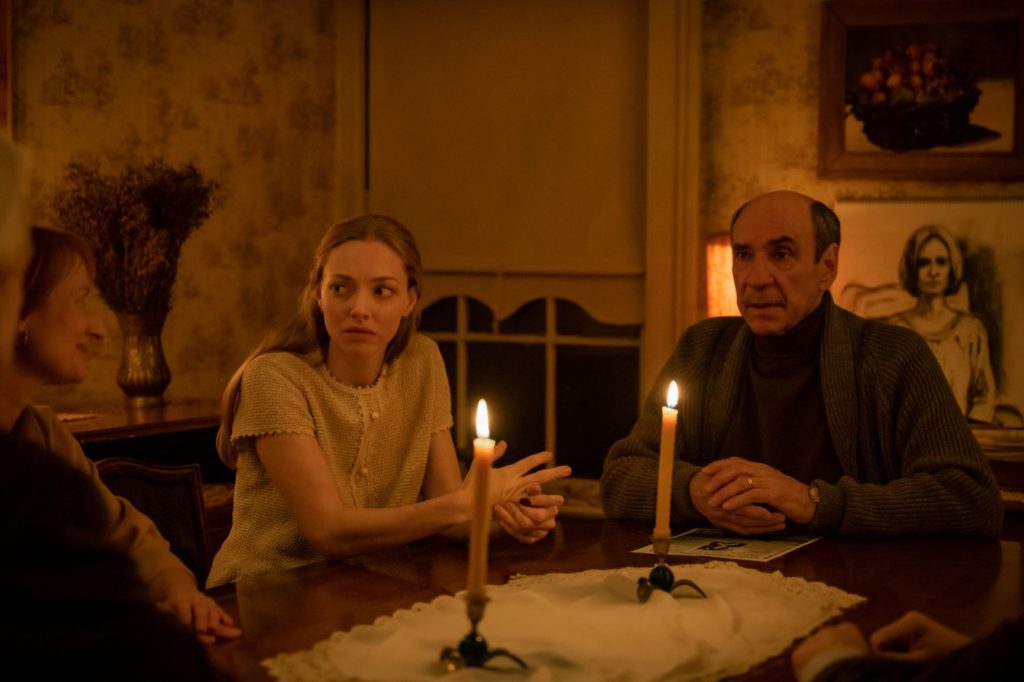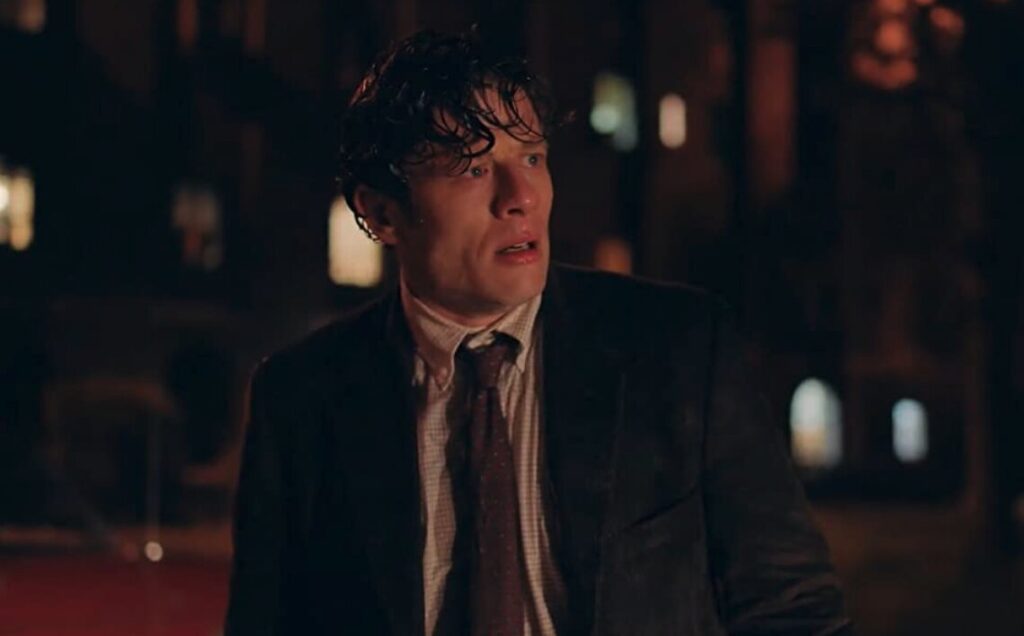
Every horror movie is a metaphor. Things don’t just go bump in the night for no reason; they carry messages and meaning, whether about racial injustice or domestic abuse or romantic incompatibility. The genre is an amplifier, designed to imbue figurative predicaments with literal and physical force. Things Heard & Seen, the new horror-lite picture from Netflix, proffers any number of tribulations for allegorical fodder: the peril of being trapped in a loveless marriage; the trauma of suffering from an eating disorder; the fear of being dislocated from the city to the country; the questionable wisdom of hiring a hunky, piano-playing townie to do your yardwork.
As that scattered litany of problems indicates, Things Heard & Seen is not an especially trenchant or provocative work. But it’s hardly terrible, seeing as it probes its central relationship with honesty and sobriety. Still, it’s easy to wish that this vague, slippery movie were a bit scarier, and that it cared more about its leading lady.
That would be Amanda Seyfried, last seen on (TV) screens giving the performance of her career in Mank. Netflix has ostensibly rewarded her here with a starring role, though her character—an art restorer named Catherine Claire—is a rather familiar type, the Troubled Wife. To be fair, that’s by design. The screenplay, by American Splendor co-directors Shari Springer Berman and Robert Pulcini (adapting a novel by Elizabeth Brundage), posits Catherine as a smart and independent woman who nonetheless subordinates herself to her husband out of a dubious sense of marital loyalty. So when hubby George (James Norton), a gifted art history professor, lands a gig at a small liberal-arts school in Upstate New York, Catherine resolves to make the best of it, even when she discovers that she’s moved into a haunted house.

This is hardly a spoiler. Even ignoring the cold open, which finds blood leaking from a garage’s ceiling onto George’s Peugeot, it’s immediately clear that Catherine and George’s new abode, with its chipped paint and creaky floorboards, shelters more than just dust. A rocking chair wobbles of its own accord. A nightlight throbs with unusual intensity. A radio refuses to stop playing. A mysterious woman appears in random shadows. And did the realtor neglect to mention the murder-suicide that took place years earlier?
Springer Berman and Pulcini present all of these clanks and creeps satisfactorily, but without any real distinction. Perhaps I’ve been spoiled by the likes of Hereditary and Saint Maud, but I prefer my sinister allusions to be accompanied by genuine dread; despite its rustic setting and dim lighting, Things Heard & Seen is rarely scary. Yet this, too, is arguably intentional. After all, one of the film’s more interesting ideas is that the paranormal can be a realm of sadness as well as terror. Rather than screaming and panicking, Catherine finds herself empathizing with the female specter who stalks her narrow hallways, leading to a séance sequence (led by F. Murray Abraham, of all people) that replaces the typical shrieks and shocks with something more contemplative and mournful.

With her wide green eyes and open face, Seyfried is a sympathetic presence, and she does her best to bring dimension to Catherine’s mounting distrust and paranoia. All the same, the role is unduly limiting. For all of her purported intelligence and pluck, Catherine is defined primarily as a spouse, whether supportive or suspicious; initially, she’s dutifully (and sexually) accommodating of her husband, while later, her gradual spiritual awakening coincides with her dawning doubts about his true nature.
And ironically, Things Heard & Seen is most vividly entertaining when it focuses on George. Not long after embedding himself in his new community, our gregarious scholar embarks on an affair with a local looker (Stranger Things’ Natalia Dyer), who bemoans that, despite his smarmy demeanor, she still finds him attractive. You can see what she means. George is unctuous and duplicitous, a true cad and a terrible snob. (When he suggests throwing a party for his colleagues, he winces when Catherine insists that they invite the neighbors as well.) But he’s also kind of charming, with a broad smile and an impish air. And Norton, who’s currently swishing his way sublimely through HBO’s The Nevers, makes the character both appealing and unnerving. There’s something not quite right about George, and his unpredictability—his penchant for shifting on a dime from flirtatious to menacing—lends the film a welcome sense of danger.

Which it never fully capitalizes on. The challenge for any movie like this is whether its supernatural shenanigans can properly magnify its thematic concerns. It’s a test that Things Heard & Seen fails, and badly. As the cracks in the Claires’ marriage widen and splinter, Springer Berman and Pulcini’s handling of the horror material grows increasingly blurry and haphazard. The images are soft and sloppy; for all of its persistent depictions of classical paintings and religious iconography, the film never achieves the requisite catalyzing kick. It’s possible to imagine a stripped-down edition of the picture, one that shelves the mystical elements entirely in favor of a harsh and revealing exploration of a doomed relationship; the theoretical allure of that alternative version only exposes the flaws of the existing one.
Among the ominous artifacts that Catherine locates in her spooky new home is a gigantic bible, which in turn holds scraps of paper where certain names have been scratched out and replaced with a single word: “damned.” It’s tempting to ascribe metaphorical significance to such a symbol, and to suggest that the movie itself will suffer a similarly horrible fate. But Things Heard & Seen is too tentative, too impermanent, to be destined for eternal damnation. Purgatory is more like it.
Grade: C
Jeremy Beck is the editor-in-chief of MovieManifesto. He watches more movies and television than he probably should.
